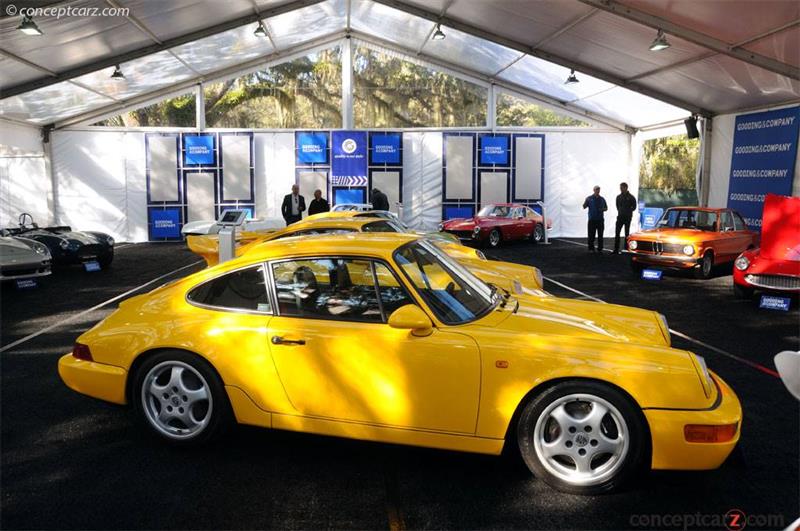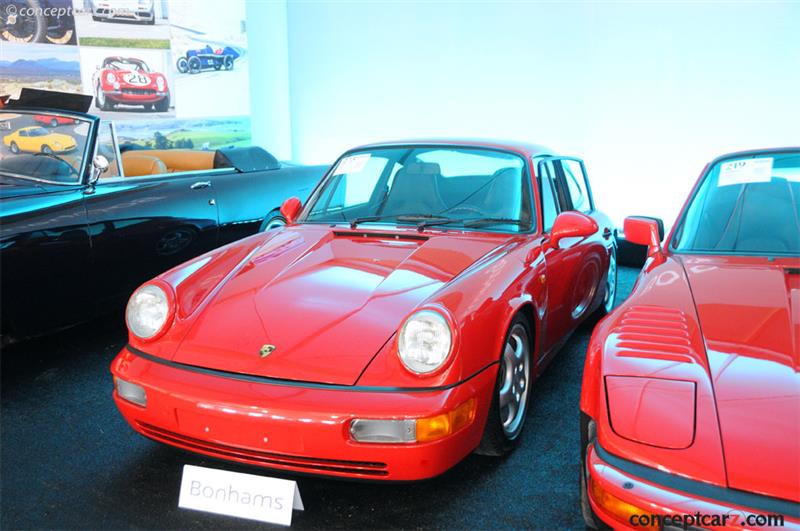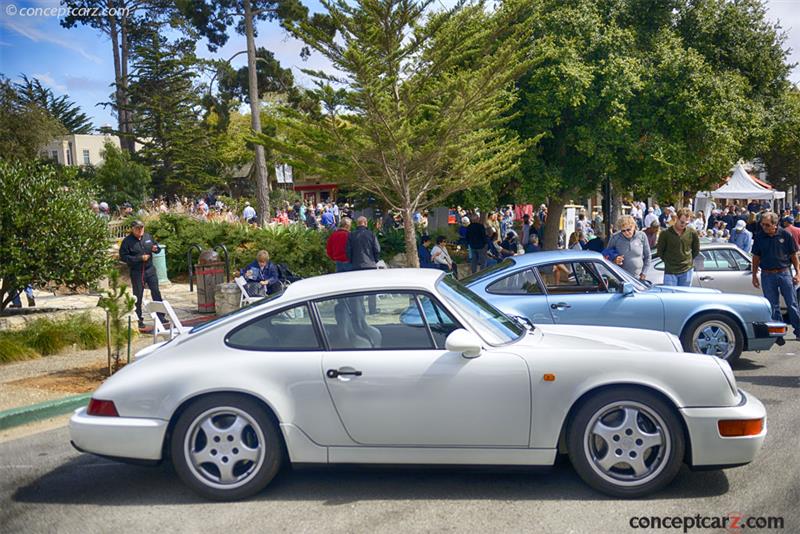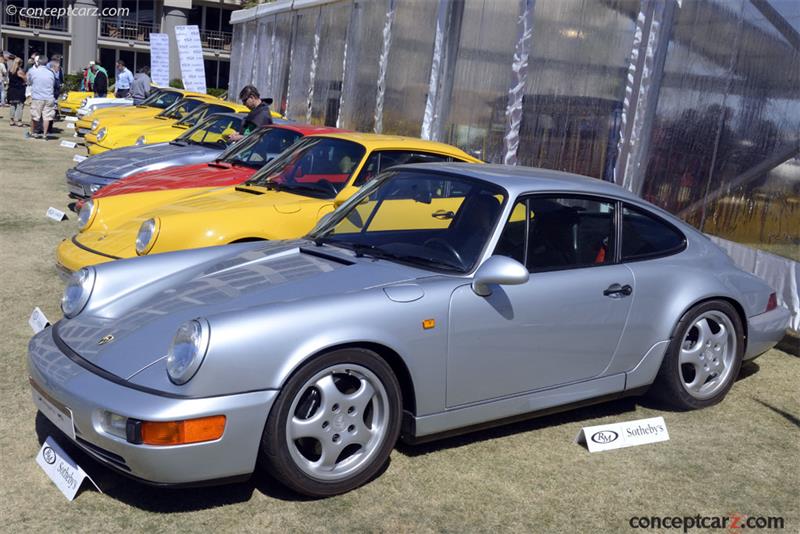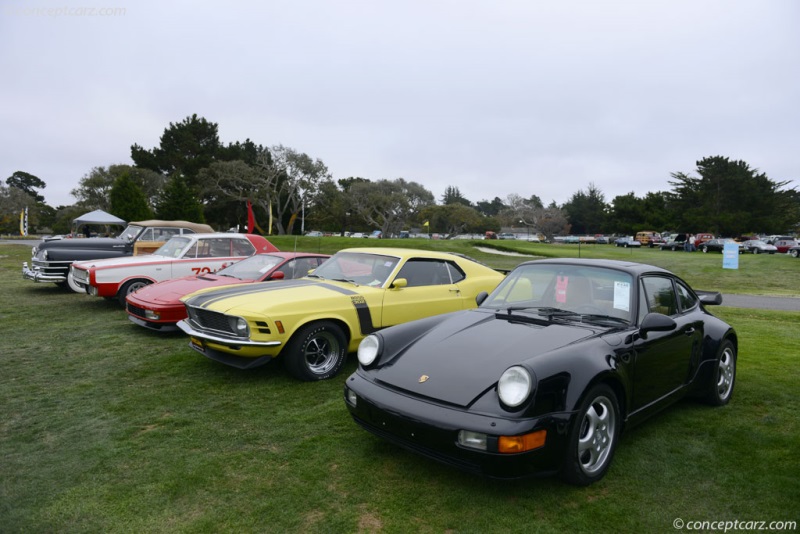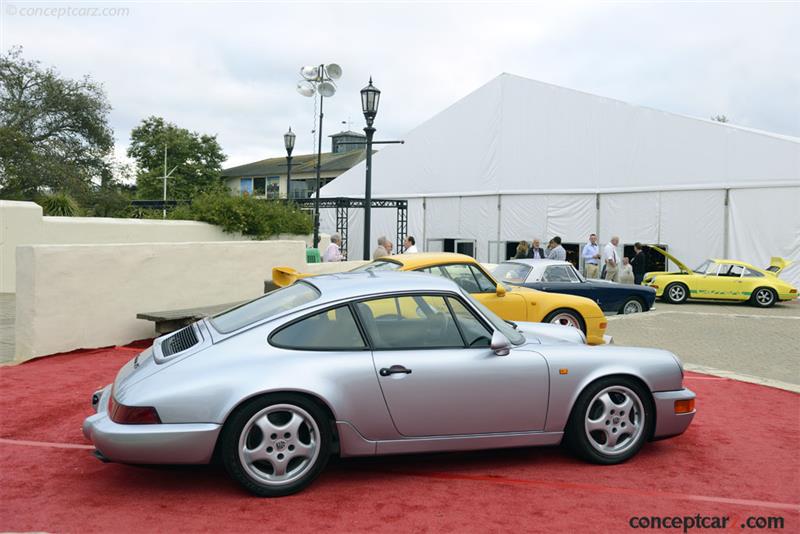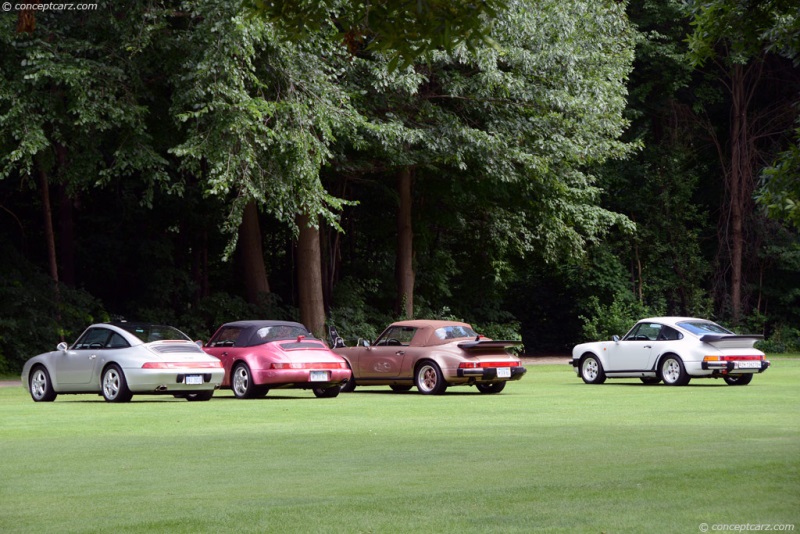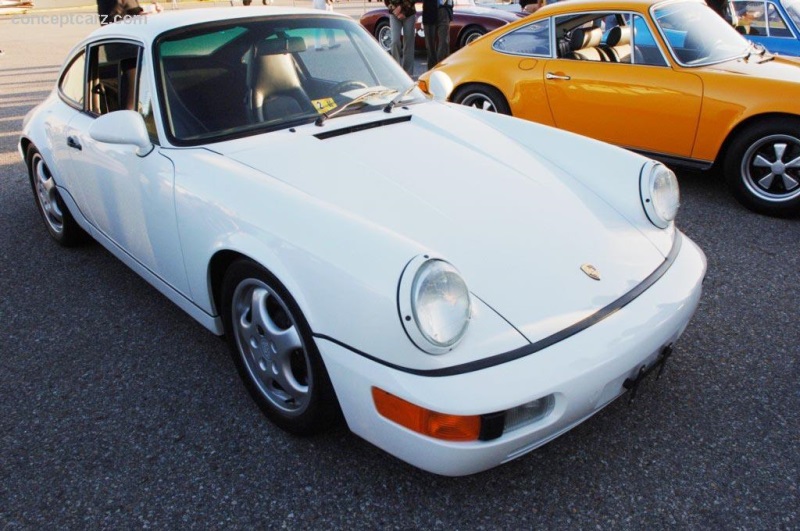Throughout the five decades of the Porsche 911 production, it has proven to be a capable Grand Tourer, circuit racer, and rally car. The first 911 made its appearance in 1963 at the Frankfurt Motor Show as the '901'. Just after production commenced in 1964, its name was changed to the 911, following Peugeot's complaints about the use of '0' model numbers. The 911 had a similar rear-engine layout as the preceding Type 356, though it switched to unitary construction for the body shell and exchanged the 356's VW-based suspension for a modern McPherson strut and trailing arm arrangement. The first incarnation of the 911 was powered by a single overhead camshaft, air-cooled flat-six that displaced 1991cc and offered 130 horsepower. Over the years, it was enlarged and developed, eventually growing to more than 3 liters. With the help of a turbocharger, the engine produced over 300 horsepower. 
Coupe
Chassis #: WP0AB2962NS420579
Engine #: 62N81380
View info and history
Auction entries : 1Porsche launched the Benjamin Dimson-designed 911 Carrera 2 and Carrera 4 (known internally as the Type 964) in 1989. Initially, just the four-wheel-drive form (Carrera 4 or C4) was offered; the following year the two-wheel-drive Carrera 2 (C2) was introduced. This marked the first time that four-wheel drive had been used on a series-production Porsche model. With its smoother sills and flatter floorpan, it had a drag coefficient of 0.32. High-speed stability was ensured with the help of a self-deploying rear spoiler. Porsche had gained experience with 4-wheel drive on the 959 supercar, and many of those lessons learned influenced the design of the 964's suspension and chassis. Power-assisted steering (a first for the 911), anti-lock brakes, and a five-speed manual transaxle were standard equipment.The Type 964 was 85-percent different from the outgoing model. The displacement was now 3.6-liters and developed 250 horsepower. Aerodynamics, downforce, stability, and road holding at high speed were greatly improved. The retractable spoiler automatically extended at 50 mph which increased downforce and doubled the volume of cooling air fed into the engine compartment. The interior received revised instrumentation which had a larger set of warning lights that were tied into the car's central warning system, enhancing Porsche's reputation for reliability. 
CoupeZero-to-sixty miles per hour was accomplished in 5.3 seconds and top speed exceeded 160 mph. During its five years of production over 62,000 examples left the factory. In 1992, the European market was given the opportunity to purchase a lightweight, rear-wheel-drive-only version of the 964 called the Carrera RS. It was available in three variants that included Touring, Lightweight, and N/GT. The standard engine received modifications, internally titled M64/03, with output increased to 260 hp. A lightweight flywheel was coupled to the G50/10 transmission with closer ratios, symmetrical limited-slip differential, and steel synchromesh. For increased stiffness and rigidity, the body shell was entirely steam-welded. Thinner glass was installed for some of the windows, the wheels were magnesium versions of the cup wheel, and the front bonnet was constructed from light alloy. Its stance was lowered by 40 mm and the suspension was given stiffer springs and shocks in addition to adjustable anti-roll bars. These improvements made the Carrera RS 345 pounds lighter than the United States version Carrera 2 model. The lightweight 964-generation 911 Carrera RS was essentially track-day specials that could be legally driven on the road. For the United States market, they received the limited-edition American Roadster in 1992. They were built to commemorate the 1952 American Roadsters that had competed at Thompson Raceway in 1952. They were equipped with air-conditioning, power steering, a six-speaker stereo, and the turbocharger 201.3 CID engine with 320 horsepower. 
CoupeThe 1992 Carrera 2 and Carrera 4 were available as a coupe, Targa, and cabriolet. Pricing began at $63,900 for the Carrera 2 Coupe and 609 examples were sold. The Carrera 2 Cabriolet was the most popular in the lineup with 654 examples built.
by Daniel Vaughan | May 2019

Coupe
Chassis #: WP0AB2962NS420579
Engine #: 62N81380
View info and history
Auction entries : 1
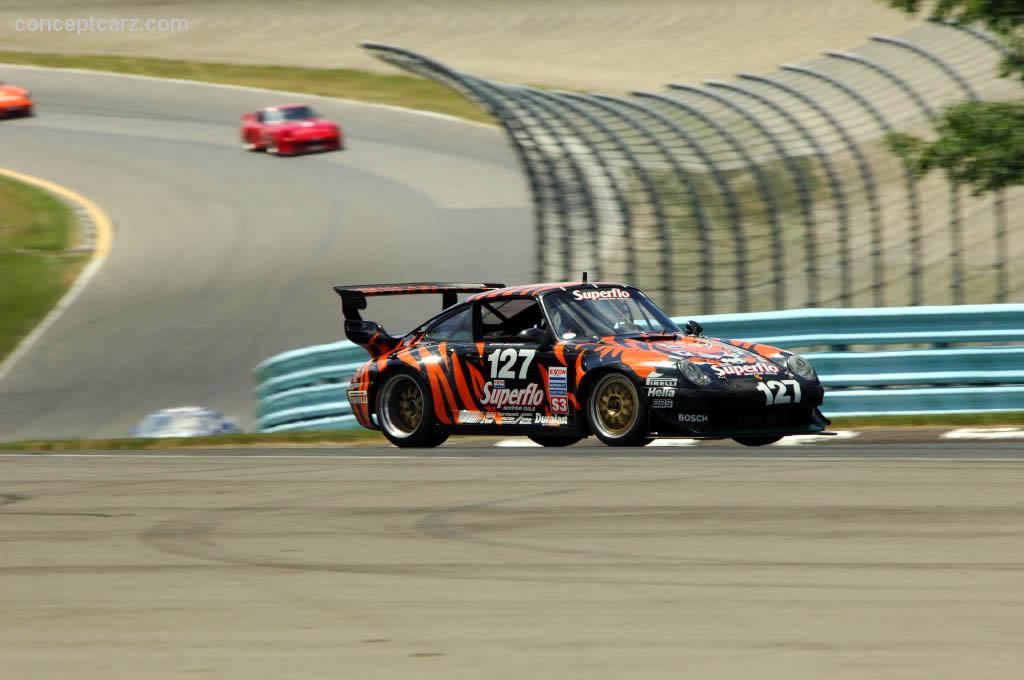
Coupe

Coupe
by Daniel Vaughan | May 2019
Related Reading : Porsche 911 History
The legendary Porsche 911 is the longest production run sports car of all time. It was conceived as a successor for the highly successful Porsche 356 and from the start had high aspirations for success. Ferry Porsches son, Ferdinand Alexander Porsche, designed the 911. When it went into production it was labeled the 901 but Peugeot had claims to the name, so to avoid infringing on their naming scheme,....
Continue Reading >>
Continue Reading >>
Related Reading : Porsche 911 History
Who could predict that the 911 would be Porsches saving grace and surpass the 356 in sales, longevity Quickly establishing itself as an icon of 60s cool, the iconic 911 only became more popular as the years went on. The flagship of the current lineup of Porsche, the 911 (pronounced Nine Eleven) or Neunelfer is a two-door grand tourer with a very distinctive design. The 911 is one of the oldest....
Continue Reading >>
Continue Reading >>
Similar Automakers
Similarly Sized Vehicles
from 1992
1992 Porsche 911 Carrera Vehicle Profiles
Recent Vehicle Additions
Performance and Specification Comparison
Price Comparison
$40,000 - $51,050
$51,050
Type 964 Specification Comparison by Year
Year
Production
Wheelbase
Engine
Prices
2,849
89.50 in.
6 cyl., 219.70 CID., 247.00hp
6 cyl., 197.05 CID., 320.00hp
6 cyl., 197.05 CID., 320.00hp
$60,750 - $95,050
89.50 in.
1,891
89.50 in.
6 cyl., 219.75 CID., 250.00hp
6 cyl., 197.05 CID., 320.00hp
6 cyl., 197.05 CID., 320.00hp
$63,905 - $84,785
89.50 in.
6 cyl., 219.70 CID., 250.00hp
6 cyl., 201.30 CID., 320.00hp
6 cyl., 201.30 CID., 320.00hp
$90,000 - $90,000
89.50 in.
6 cyl., 219.70 CID., 250.00hp
6 cyl., 201.30 CID., 320.00hp
6 cyl., 201.30 CID., 320.00hp
$90,000 - $90,000
Related Automotive News

2024 Mazda MX-5 Miata: Pricing and packaging
MX-5 Miata receives key updates inside and out that further refine the roadsters successful formula New available Asymmetric limited-slip differential improves MX-5 Miatas renowned progress...

All-New 2022 Toyota GR 86: Thrills Around Every Corner
Modern sports car designed by enthusiasts, for enthusiasts
Precision handling, low center of gravity and near perfect balance
2.4L flat-four boxer engine rewards drivers with peak torque at lower RPM
Functional vents and spoilers maximize aerodyn...

NEW RENAULT TWINGO GT: DRIVING ENJOYMENT WITH A DASH OF RENAULT SPORT SPICE
Making full use of its rear-engine design, Twingo GT has been honed for driving enjoyment.
Precise, comfortable and fun to drive, it offers affordable pleasure behind the wheel, in keeping with the tradition of the GTs designed by Renault Sport.
T...
2015 SUBARU XV CROSSTREK AND XV CROSSTREK HYBRID GET NEW INFOTAINMENT AND SAFETY TECHNOLOGIES
Subaru-developed driver assist technology, EyeSight® now available on XV Crosstrek
EyeSight-equipped vehicles also add Steering Responsive fog lights standard
New 6.2-inch infotainment system with rear vision camera standard on 2.0i, 2.0i Premium...
MODEL YEAR 2015: NEW GOLF FAMILY, REDESIGNED JETTA, AND NEW TDI® CLEAN DIESEL ENGINE HEAD THE CHANGES
In a busy year, Volkswagen will also add a new Golf SportWagen, an all-new Golf R, a redesigned Touareg SUV, and the companys first U.S.-market EV, the e-Golf
All-new Golf is bigger, lighter, and more fuel-efficient than the previous model,...






















